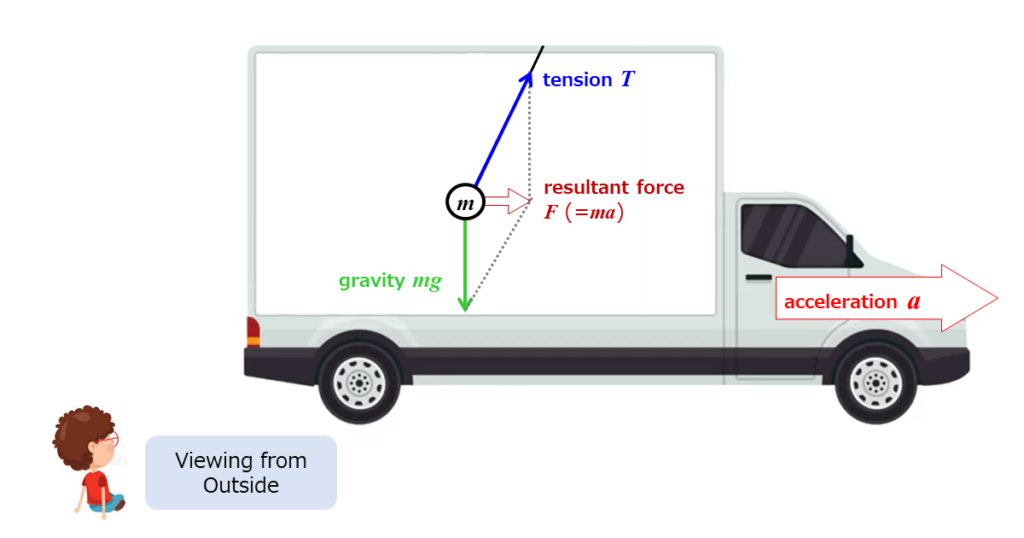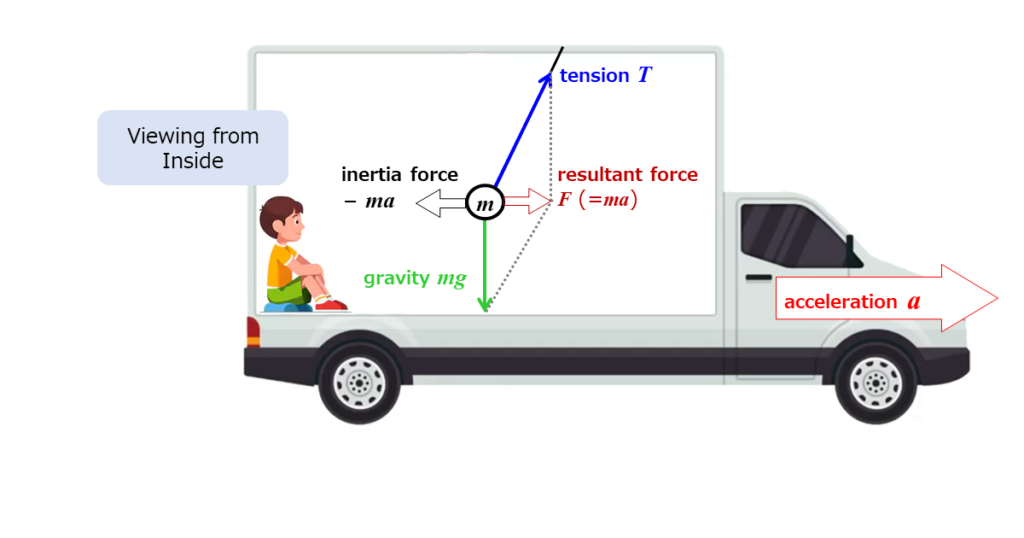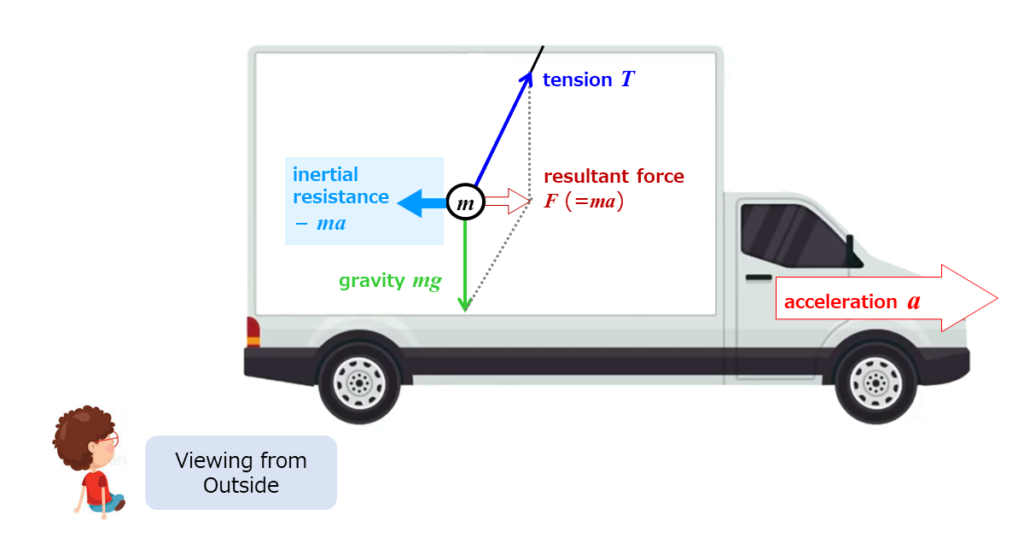When you brake suddenly in a car, you feel like you’re being pushed forward. When you accelerate quickly, it feels like you’re being pulled back.
Similarly, from outside, a car appears to lean forward when braking and lean back when accelerating.
These effects are due to what we call inertia forces. This concept is often discussed in the context of race cars and is often referred to as G-force.
Physics teaches us that inertia force is an “apparent force.” It seems real when we’re moving with the object, like sitting in a car, but it’s not seen from outside.
Is it a real force, or just apparent when we’re inside the vehicle? This question is important for understanding vehicle dynamics.
Table of Contents
Newton’s Second Law of Motion
When a force is applied to an object, the object experiences acceleration in the same direction as the force.
The acceleration is proportional to the force and inversely proportional to the object’s mass.
This is expressed in the equation:

In the case of a vehicle, the force can be a driving force generated by the engine, a braking force by the brakes, or a cornering force by the tires. When these forces act on the vehicle, the vehicle accelerates or decelerates.
For more details, please refer to the following article.
Acceleration and Newton’s Second Law of Motion: The Key Role in Race Car Dynamics
Example: A Hanging Weight in a Moving Truck
Imagine a weight hanging from the ceiling of a truck by a string.
The truck is accelerating with a constant acceleration a.
View from Outside
You are viewing the truck from outside.
You will see the weight being pulled back a little and moving together with the truck.

The weight is subjected to downward gravity mg and a tension (pulling force) T in the direction of the string.
According to Newton’s second law, there must be an external force acting on the weight, since the weight is accelerating together with the truck with acceleration a.
In this case, the external force is the resultant force of the tension T and the gravity mg.
Doesn’t “Inertia Force” Come Into Play?
The term “inertia force” did not appear in the above explanation.
The weight is under the resultant force F, and it is accelerating the weight with acceleration a. Newton’s second law is established, and “inertia force” does not come into play.
View from Inside
Now consider the same situation as seen by a person sitting in the cargo compartment.

To this person, the weight appears to be stationary, since the weight and the truck are moving together.
But the string is not hanging straight down, but is pulled backward at an angle.
Naturally, tension is generated in the string. But the weight is at rest, which means the acceleration is zero.
If the acceleration is zero, the external force should also be zero.
Therefore, we consider a hypothetical force called “inertia force” to balance the external force.
In other words, the “inertia force” is an “apparent force” or “virtual force” that is added to the car to make it add up when viewing from inside of the car.
Questions about Newton’s Law
Does the explanation so far make sense?
When you are in a car, you feel as if you are pushed forward by sudden braking or pulled backward by sudden acceleration. Are these due to “apparent forces” or virtual forces?
Also, when you look at a running car from the outside, a car appears to lean forward when braking and lean back when accelerating. Are these due to “apparent forces” that do not exist if you are viewing from outside of the car?
D’Alembert’s Principle
As explained earlier, Newton’s equation of motion is:

This equation can be transposed and rewritten as:

If we consider (-ma) as a real force, we can assume that the object is in equilibrium with an external force F and a force (-ma).
(-ma) is called “inertial resistance”.
In accelerated motion, the external force F and the inertial resistance (-ma) can be considered to be always in balance. Since the inertial resistance is a real force, it exists regardless of whether it is viewed from outside or inside the vehicle.

In vehicle dynamics, “inertia force” refers to this “inertial resistance. In other words, inertial force is not an apparent force, but a real force that arises against acceleration.
D’Alembert’s principle rearranges Newton’s second law. It suggests treating the motion as if there’s a force fighting against it. This makes it seem like everything is balanced, whether you’re inside or outside the car.
Summary of Inertia Force
– Inertia force is a real force, whether you’re inside or outside the car.
– It acts in the opposite direction to the acceleration.
– The magnitude is expressed as mass times acceleration.
Conclusion
The inertia force experienced in a moving car or by a person is not just a theoretical concept, but a tangible force counteracting the vehicle’s acceleration. Understanding this through d’Alembert’s principle is important in vehicle dynamics.




